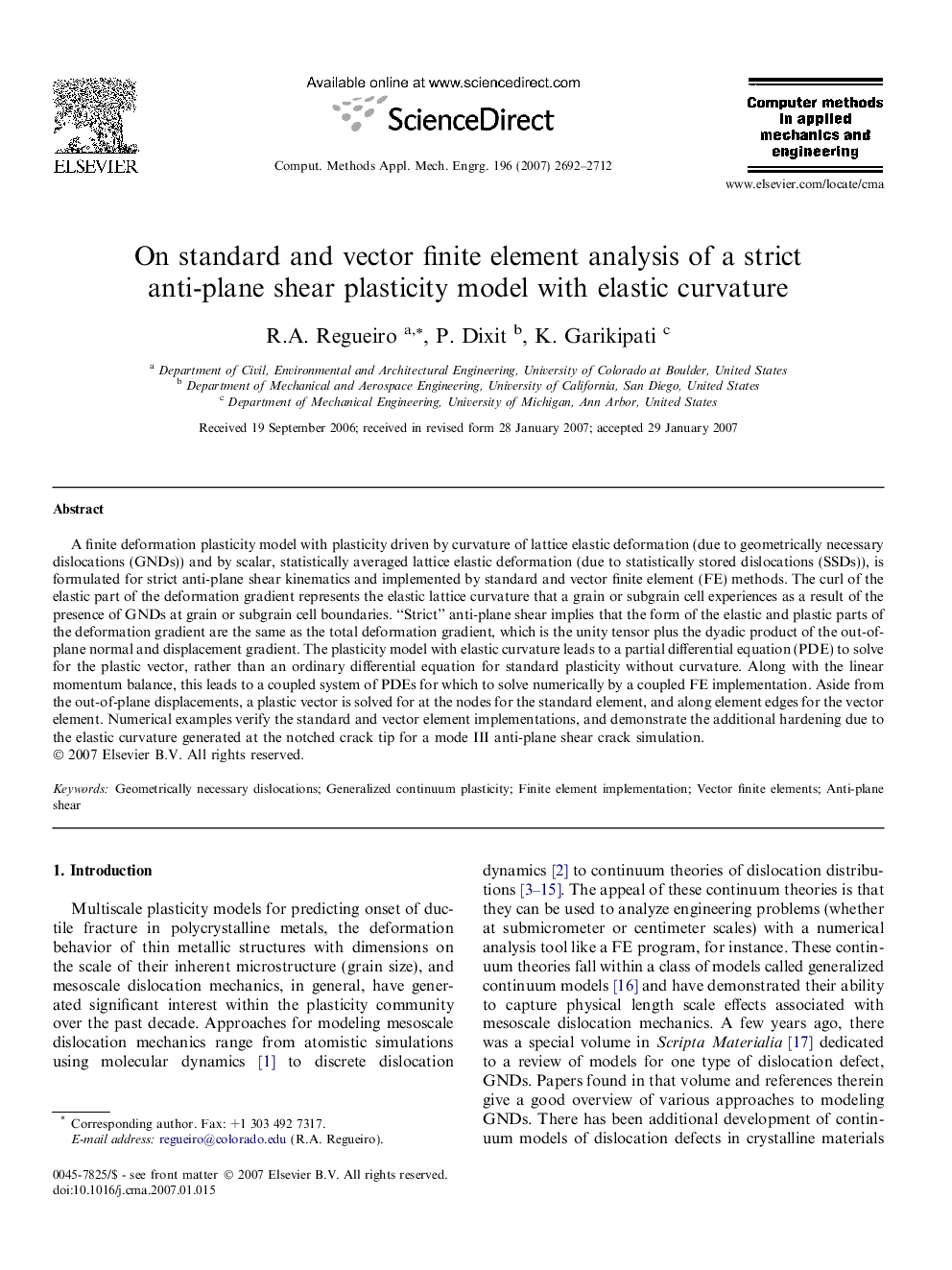| Article ID | Journal | Published Year | Pages | File Type |
|---|---|---|---|---|
| 500210 | Computer Methods in Applied Mechanics and Engineering | 2007 | 21 Pages |
A finite deformation plasticity model with plasticity driven by curvature of lattice elastic deformation (due to geometrically necessary dislocations (GNDs)) and by scalar, statistically averaged lattice elastic deformation (due to statistically stored dislocations (SSDs)), is formulated for strict anti-plane shear kinematics and implemented by standard and vector finite element (FE) methods. The curl of the elastic part of the deformation gradient represents the elastic lattice curvature that a grain or subgrain cell experiences as a result of the presence of GNDs at grain or subgrain cell boundaries. “Strict” anti-plane shear implies that the form of the elastic and plastic parts of the deformation gradient are the same as the total deformation gradient, which is the unity tensor plus the dyadic product of the out-of-plane normal and displacement gradient. The plasticity model with elastic curvature leads to a partial differential equation (PDE) to solve for the plastic vector, rather than an ordinary differential equation for standard plasticity without curvature. Along with the linear momentum balance, this leads to a coupled system of PDEs for which to solve numerically by a coupled FE implementation. Aside from the out-of-plane displacements, a plastic vector is solved for at the nodes for the standard element, and along element edges for the vector element. Numerical examples verify the standard and vector element implementations, and demonstrate the additional hardening due to the elastic curvature generated at the notched crack tip for a mode III anti-plane shear crack simulation.
